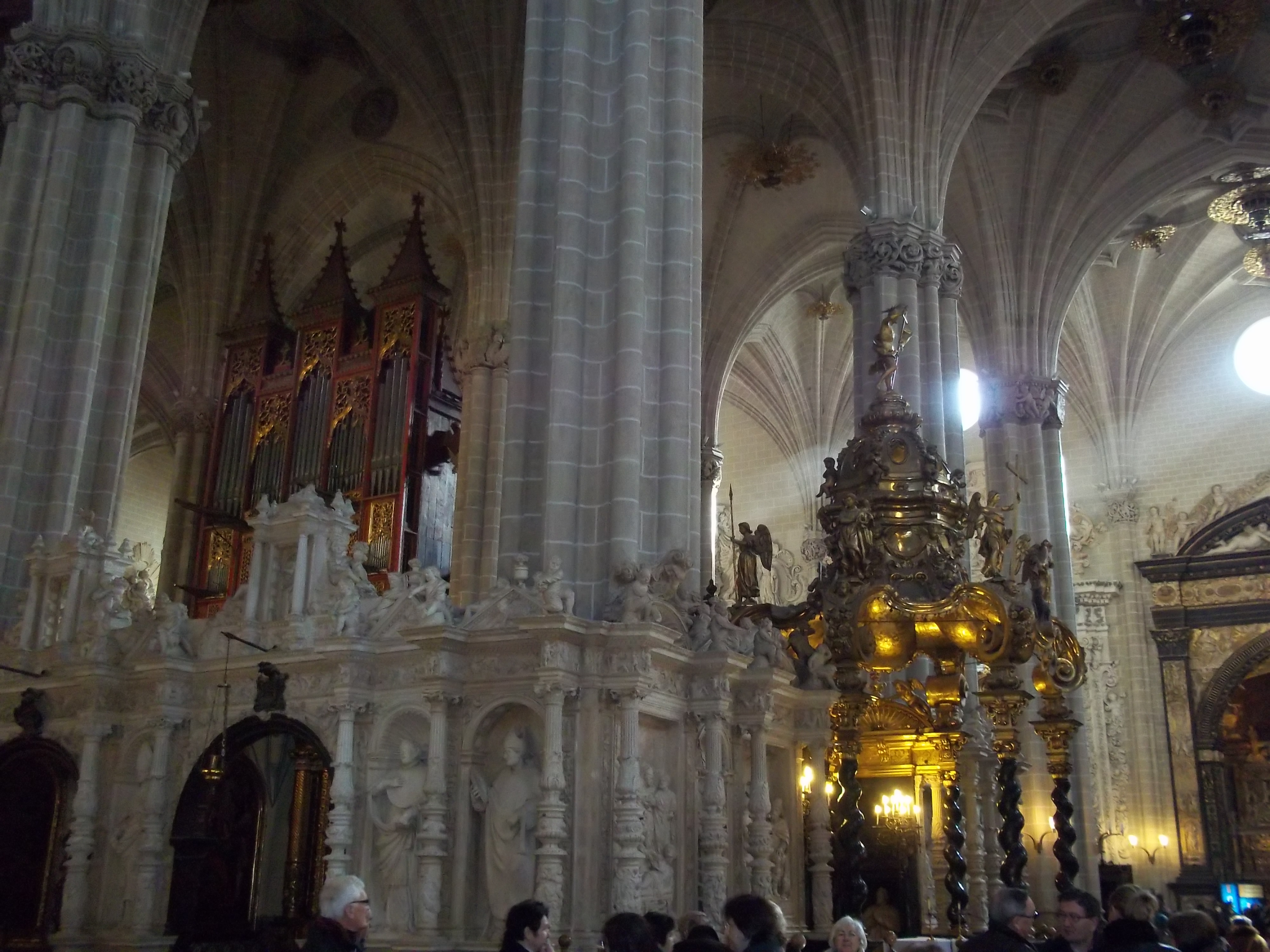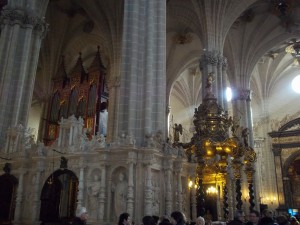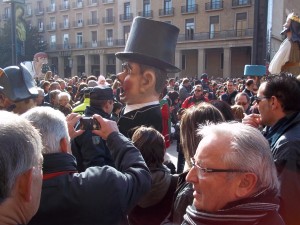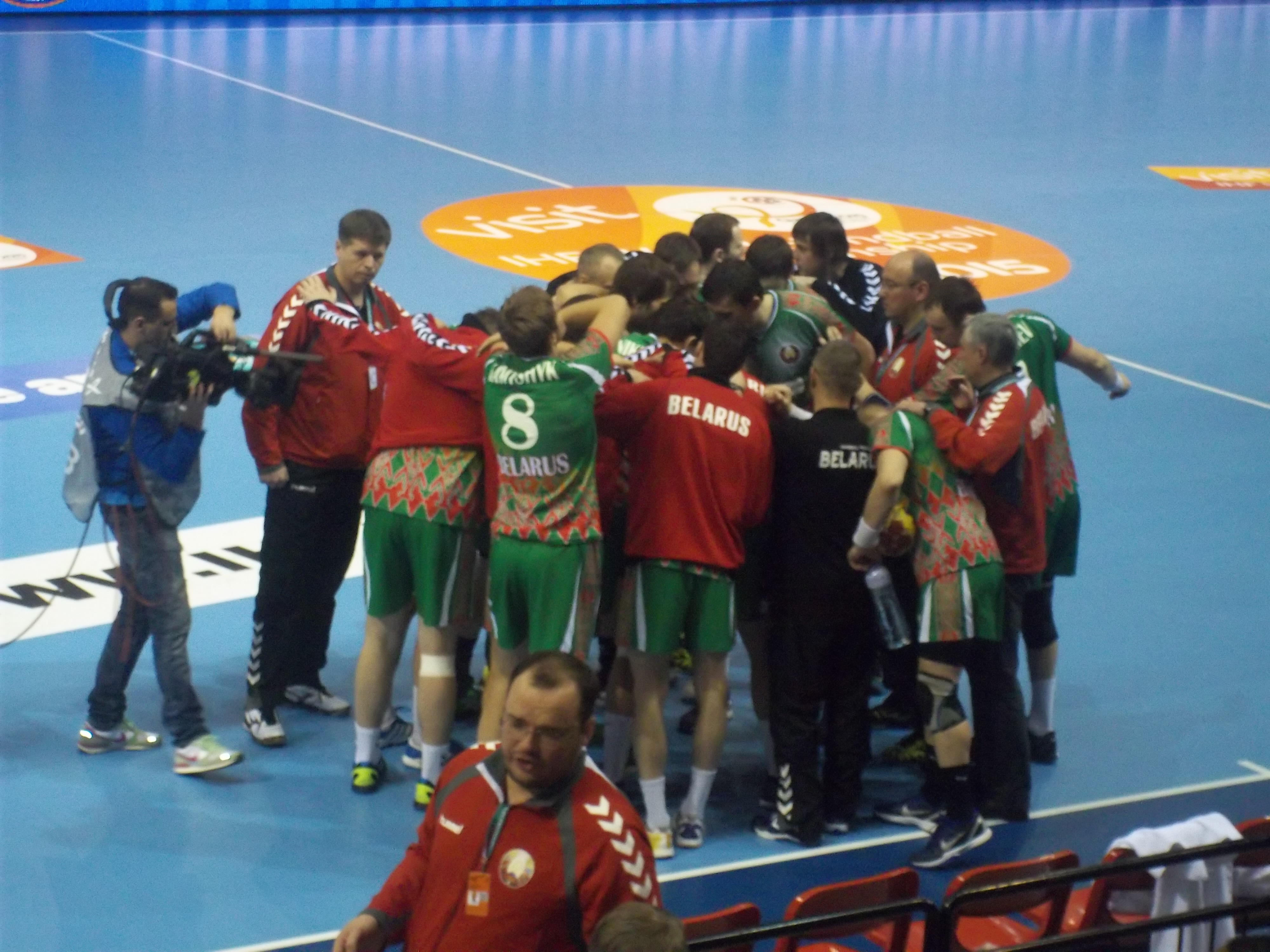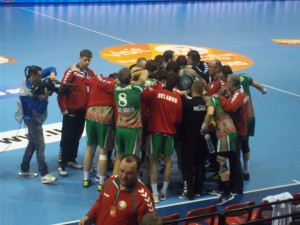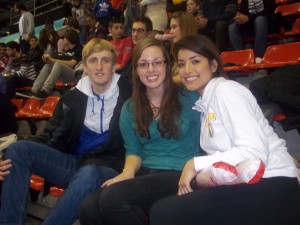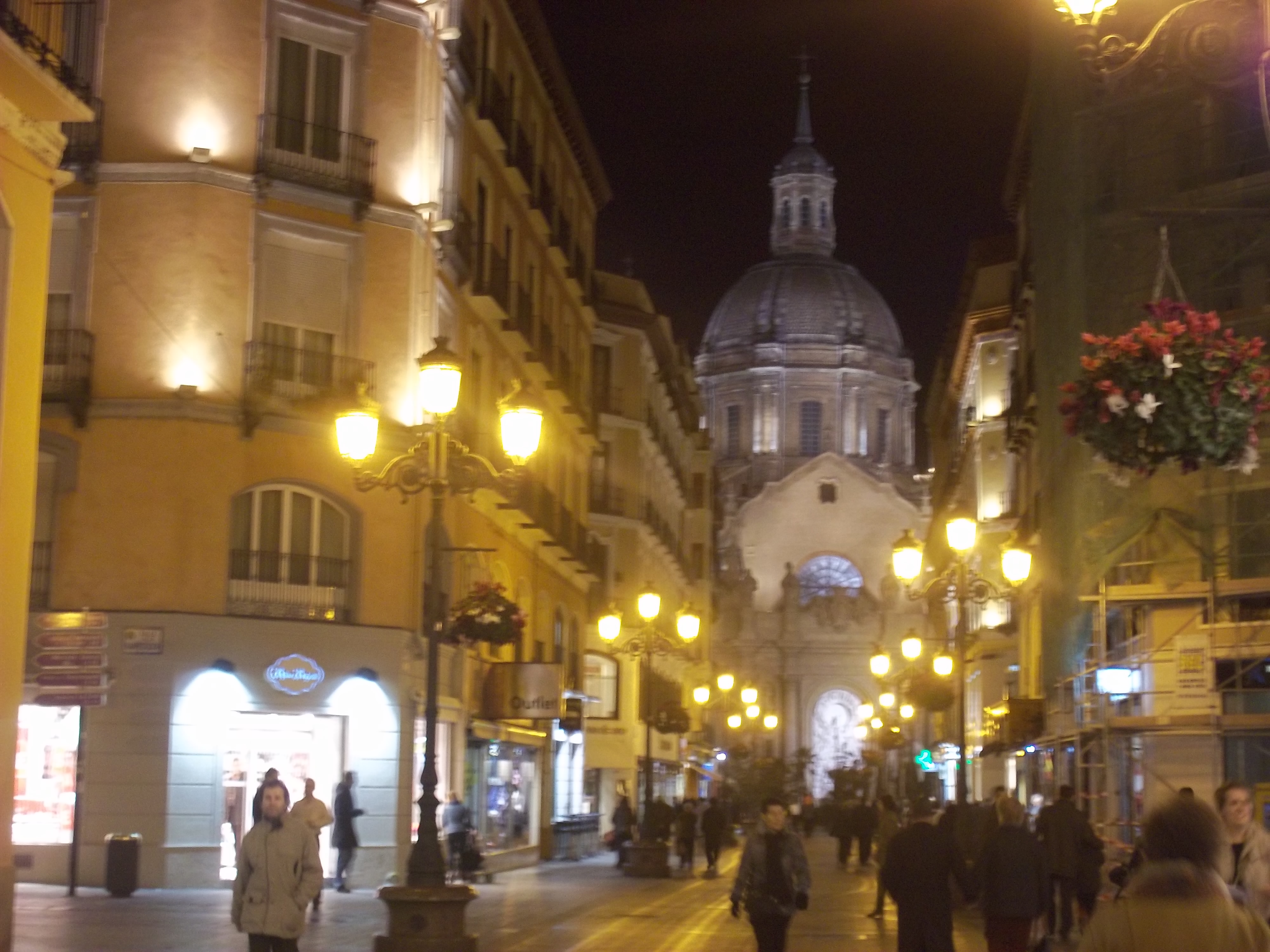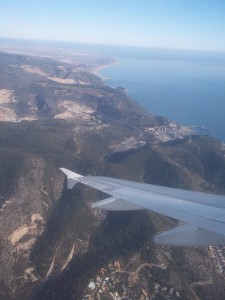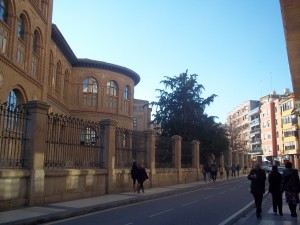Nothing boosts your ego when you’re abroad quite like that moment when you’re walking home from the store and someone stops you to ask for directions. I know, this probably doesn’t sound like much of an accomplishment, and maybe I’m over-analyzing the
situation entirely. But in my mind, that must mean that I look like I know what I’m doing out here. And the fact that (after apologizing profusely for my broken Spanish) I was able to successfully guide the person to where they needed to go – I’d say that I walked a little bit taller the rest of the way home feeling like I have a place here in this city.
It’s almost been a month since my traveling companions and I arrived in Europe, and it’s pretty surreal to see how far we’ve all come since we were wandering around the Barcelona airport, aimlessly looking for our bus to Zaragoza and wondering how on earth we were ever going to be able to understand the rapid Spanish that we heard coming from the people around us. And yet here we are, able to communicate and finding ourselves walking the line between being tourists and being locals.
Through some trial and error, I’ve found that they key to this achievement has been to participate in “the little things” that are a part of daily Spanish life here. Going to a coffee shop to read the newspaper over a café con leche. Picking up the groceries for dinner from the supermarket. Taking public transportation. Going to a bar with some friends to watch FC Barcelona play against Real Madrid in the Copa Del Rey soccer tournament. And, of course, participating in local festivals and events.
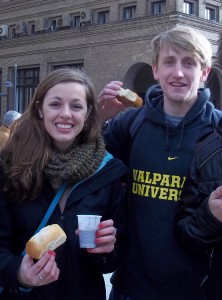
Enjoying our Roscón de San Valero with a delicious thick hot chocolate made for dipping the cake into!
This past Tuesday was the Fiesta de San Valero (the Patron Saint of Zaragoza), and it was hands-down the best day I’ve had here so far. Around ten thousand people pack into the main Plaza in town at 10 AM to eat a piece of the Roscón de San Valero, a giant wreath-shaped cake that is made specifically for the holiday. Among that huge crowd of people was my little group of amigos and I, all international students hoping to engage in the kind of cultural experience that you can only get from participating in such a huge event. Aside from the delicious Roscón, the events of the day include an abundance of street musicians and bands, free access to historical buildings like the gorgeous Catedral Seo (pictured above), and the ever-anticipated parade of the Gigantes and the Cabezudos.
It’s pretty hard to miss this colorful procession. People pack into the street, and the kids climb onto their parents’ shoulders to better see these interesting traditional characters. Cabezudos are people dressed up in costumes with massive (somewhat frightening) heads. They chase the kids around the plaza, and are a big hit among the 5-10 year old crowd. (The kids who looked to be under 5 weren’t quite sure whether to be fascinated or terrified by them!) The Gigantes are massive puppets, probably 15 to 20 feet tall, that are carried down the street, flanked by musicians. There are about 8 of them, and they’re all different (a king, a queen, one that looks like Don Quijote, etc.).
After seeing all the sights of the festival, we headed to a local bar to indulge in some delicious tapas and great conversation. There was nothing out of the ordinary about it, but it was such a fantastic way to end the day. There was just something about being part of the local celebration, followed by enjoying some local cuisine, that helped us to feel deeper immersed into the daily life and true culture of Spain. It’s those types of experiences – the little ones that have put me right in the middle of authentic Spanish living, that will stay in my heart long after I leave this incredible country. Consequently, it’s also those types of experiences that, little by little, help to transform Zaragoza from a tourist destination into a place that I’m glad to call “a home away from home”.
